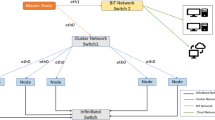Abstract
The incorporation of machine learning techniques in medical research has facilitated the exploration of novel avenues for the timely identification of diseases. The continuous progress in medical technology has facilitated the acquisition of complex and complete datasets, which in turn enhances the ability to identify medical diseases in their early stages. Alzheimer’s disease, a significant and hard problem, is characterised by the slow degeneration of brain cells and has a profound impact on cognitive functions, namely memory. It occupies a prominent position within this domain. In the middle of these exciting promises, there remains a significant research gap that pertains to the absence of thorough empirical evidence about the effectiveness of machine learning algorithms in the early identification of Alzheimer’s disease. The primary objective of this study is to address the existing research gap by conducting a comprehensive and meticulous series of experiments. A comprehensive examination of data obtained from sophisticated neuroimaging technologies is performed by utilising a wide range of machine learning models, such as Logistic Regression, Naive Bayes, Neural Networks, Random Forest, and the Stack ensemble. The primary objective is to facilitate the prompt detection of Alzheimer’s disease, hence enabling expedited interventions and therapeutic approaches. As one embarks on the journey of research, the unfolding narrative is shaped by the use of empirical evidence, establishing a strong foundation in the convergence of state-of-the-art technology and the urgent healthcare need to detect early stages of Alzheimer’s disease. Furthermore, this research not only addresses existing gaps in the literature but also ends in the identification of the most effective machine learning model, specifically the Neural Network, which has an accuracy rate of 87%. This significant advancement represents a critical juncture in the diagnosis of Alzheimer’s disease and sets a hopeful trajectory for its treatment and control.
Access this chapter
Tax calculation will be finalised at checkout
Purchases are for personal use only
Similar content being viewed by others
References
Chakraborty, A., de Wit, N.M., van der Flier, W.M., de Vries, H.E.: The blood brain barrier in Alzheimer’s disease. Vasc. Pharmacol. 89, 12–18 (2016)
Breitner, J.C.: Dementia—epidemiological considerations, nomenclature, and a tacit consensus definition. J. Geriatr. Psychiatry Neurol. 19(3), 129–136 (2006)
Kiraly, A., Szabo, N., Toth, E., et al.: Male brain ages faster: the age and gender dependence of subcortical volumes. Brain Imaging Behav. 10, 901–910 (2016)
Mesrob, L., Magnin, B., Colliot, O., et al.: Identification of atrophy patterns in alzheimer’s disease based on SVM feature selection and anatomical parcellation. Med. Imaging Augmented Reality 5128, 124–132 (2008)
Nusinovici, S., et al.: Logistic regression was as good as machine learning for predicting major chronic diseases. J. Clin. Epidemiol. 122, 56–69 (2020)
Maliha, S.K., Ema, R.R., Ghosh, S.K., Ahmed, H., Mollick, M.R.J., Islam, T.: Cancer disease prediction using naive bayes, K-nearest neighbor and J48 algorithm. In 2019 10th International Conference on Computing, Communication and Networking Technologies (ICCCNT), pp. 1–7. IEEE, July 2019
Desai, M., Shah, M.: An anatomization on breast cancer detection and diagnosis employing multi-layer perceptron neural network (MLP) and convolutional neural network (CNN). Clin. eHealth 4, 1–11 (2021)
Murugan, A., Nair, S.A.H., Kumar, K.S.: Detection of skin cancer using SVM, random forest and kNN classifiers. J. Med. Syst. 43, 1–9 (2019)
Biju, K.S., Alfa, S.S., Lal, K., Antony, A., Akhil, M.K.: Alzheimer’s detection based on segmentation of MRI image. Procedia Comput. Sci. 115, 474–481 (2017)
Teipel, S., et al.: Multimodal imaging in Alzheimer’s disease: validity and usefulness for early detection. Lancet Neurol. 14(10), 1037–1053 (2015)
Jouffe, L.: Fuzzy inference system learning by reinforcement methods. IEEE Trans. Syst. Man Cybern. Part C (Appl. Rev.) 28(3), 338–355 (1998)
Katti, G., Ara, S.A., Shireen, A.: Magnetic resonance imaging (MRI)–a review. Int. J. Dent. Clin. 3(1), 65–70 (2011)
Kukreja, V., Dhiman, P.: A Deep Neural Network based disease detection scheme for citrus fruits. In: 2020 International Conference on Smart Electronics and Communication (ICOSEC), pp. 97–101. IEEE, September 2020
Dhiman, P., et al.: A novel deep learning model for detection of severity level of the disease in citrus fruits. Electronics 11(3), 495 (2022)
Panwar, A., Yadav, R., Mishra, K., Gupta, S.: Deep learning techniques for the real time detection of Covid19 and pneumonia using chest radiographs. In: Proceedings of 19th IEEE International Conference on Smart Technologies, EUROCON 2021, pp. 250–253 (2021). https://doi.org/10.1109/EUROCON52738.2021.9535604
Bhatt, C., Kumar, I., Vijayakumar, V., Singh, K.U., Kumar, A.: The state of the art of deep learning models in medical science and their challenges. Multimed. Syst. 27(4), 599–613 (2021). https://doi.org/10.1007/s00530-020-00694-1
Sharma, N., Chakraborty, C., Kumar, R.: Optimized multimedia data through computationally intelligent algorithms. Multimedia Syst. 1–17 (2022)
Author information
Authors and Affiliations
Corresponding author
Editor information
Editors and Affiliations
Rights and permissions
Copyright information
© 2024 The Author(s), under exclusive license to Springer Nature Switzerland AG
About this paper
Cite this paper
Kumar, A., Sharma, N., Chauhan, R., Khare, A., Anand, A., Sharma, M. (2024). A Stack Ensemble Approach for Early Alzheimer Classification Using Machine Learning Algorithms. In: Santosh, K., et al. Recent Trends in Image Processing and Pattern Recognition. RTIP2R 2023. Communications in Computer and Information Science, vol 2027. Springer, Cham. https://doi.org/10.1007/978-3-031-53085-2_8
Download citation
DOI: https://doi.org/10.1007/978-3-031-53085-2_8
Published:
Publisher Name: Springer, Cham
Print ISBN: 978-3-031-53084-5
Online ISBN: 978-3-031-53085-2
eBook Packages: Computer ScienceComputer Science (R0)




